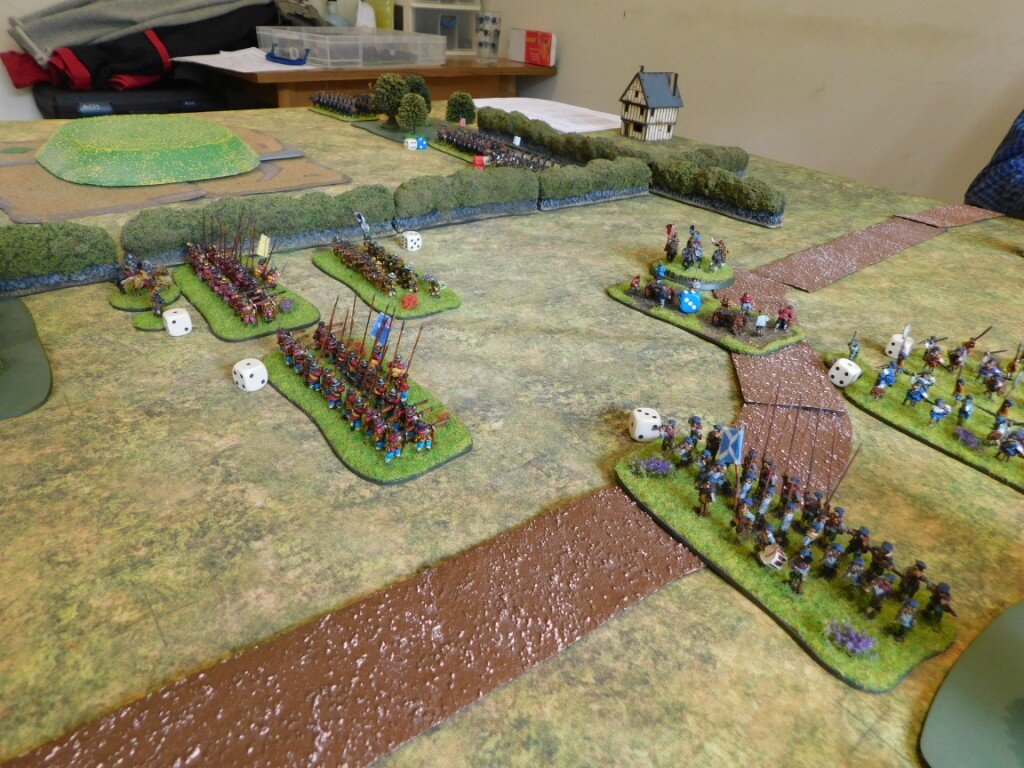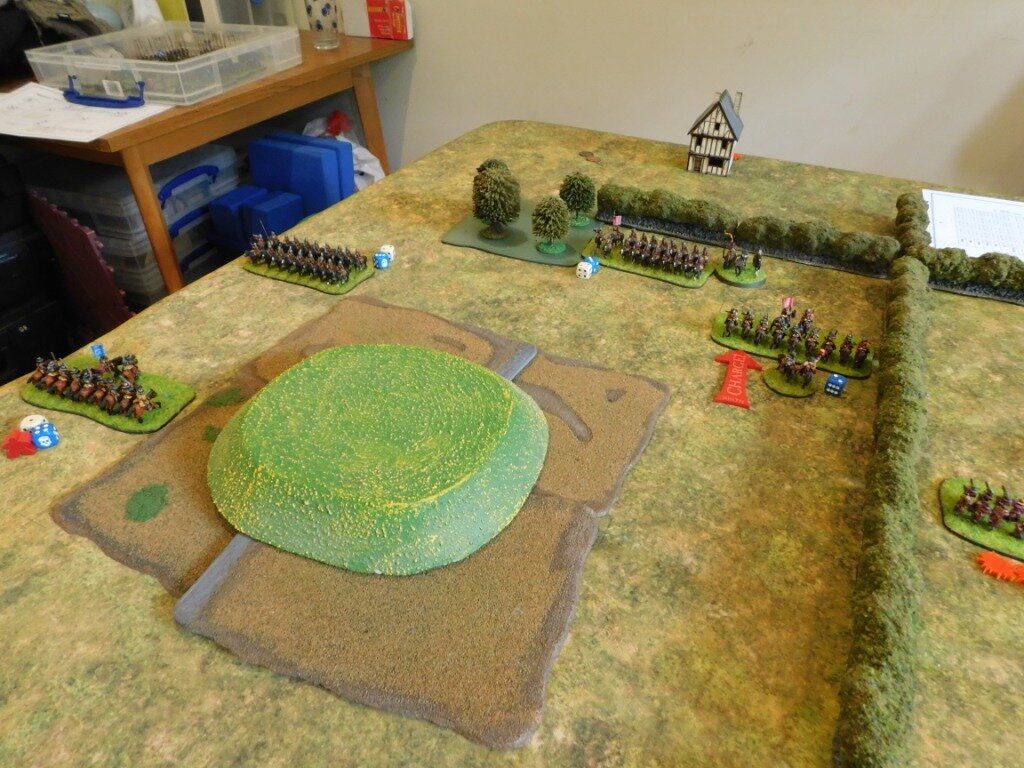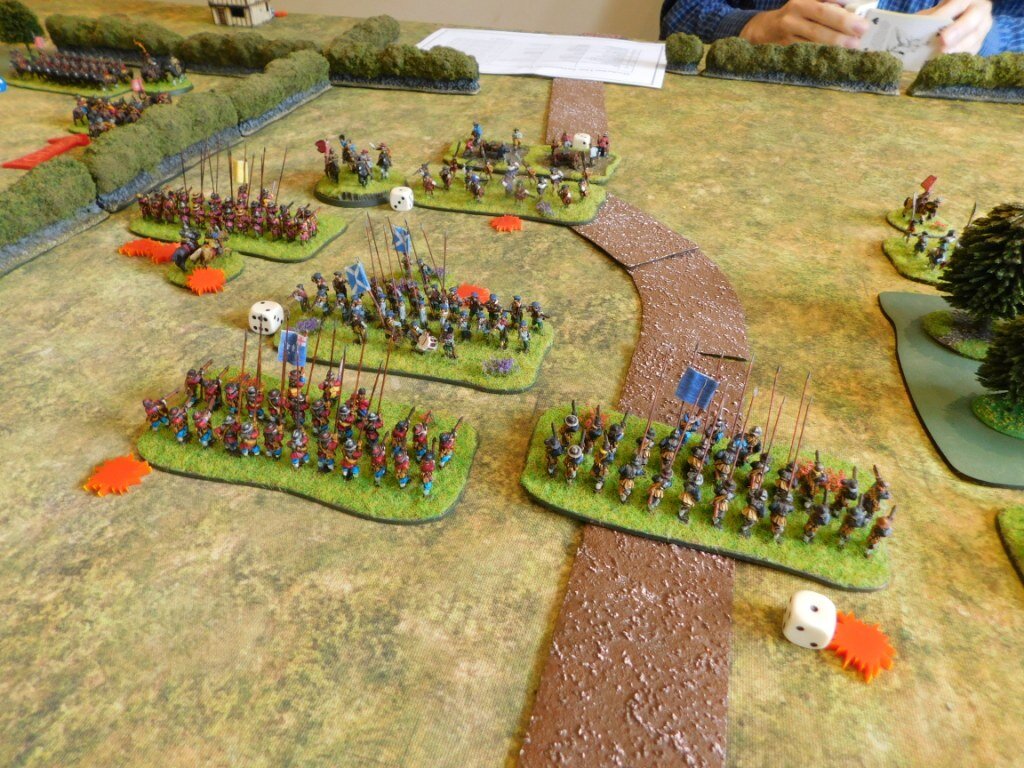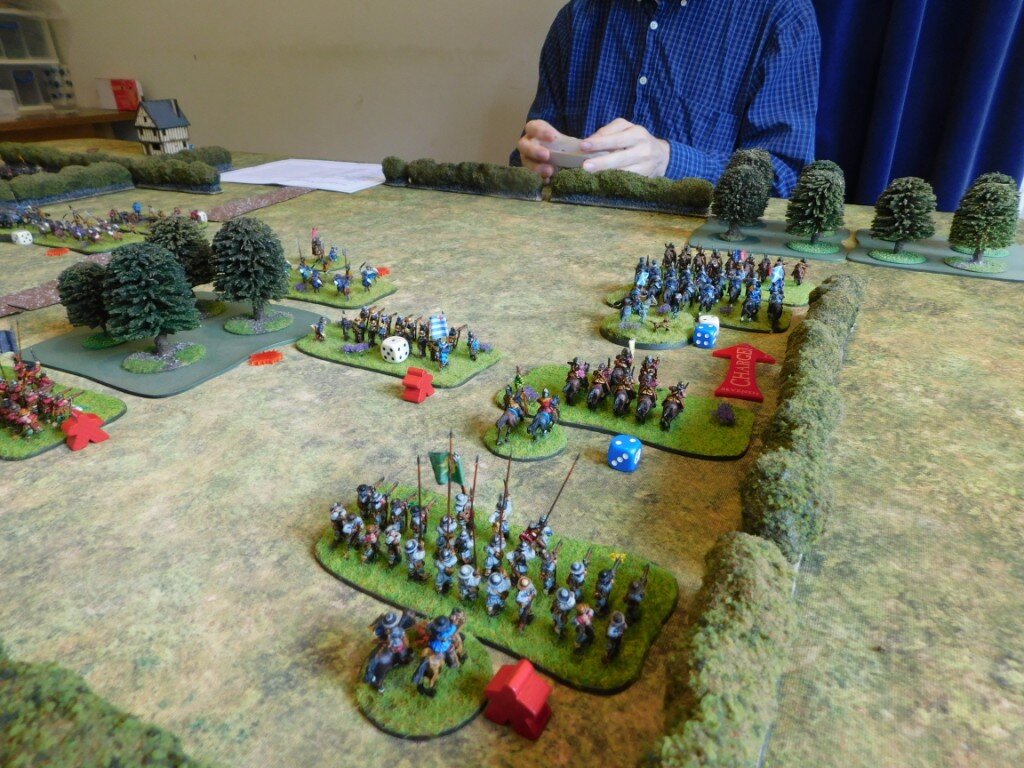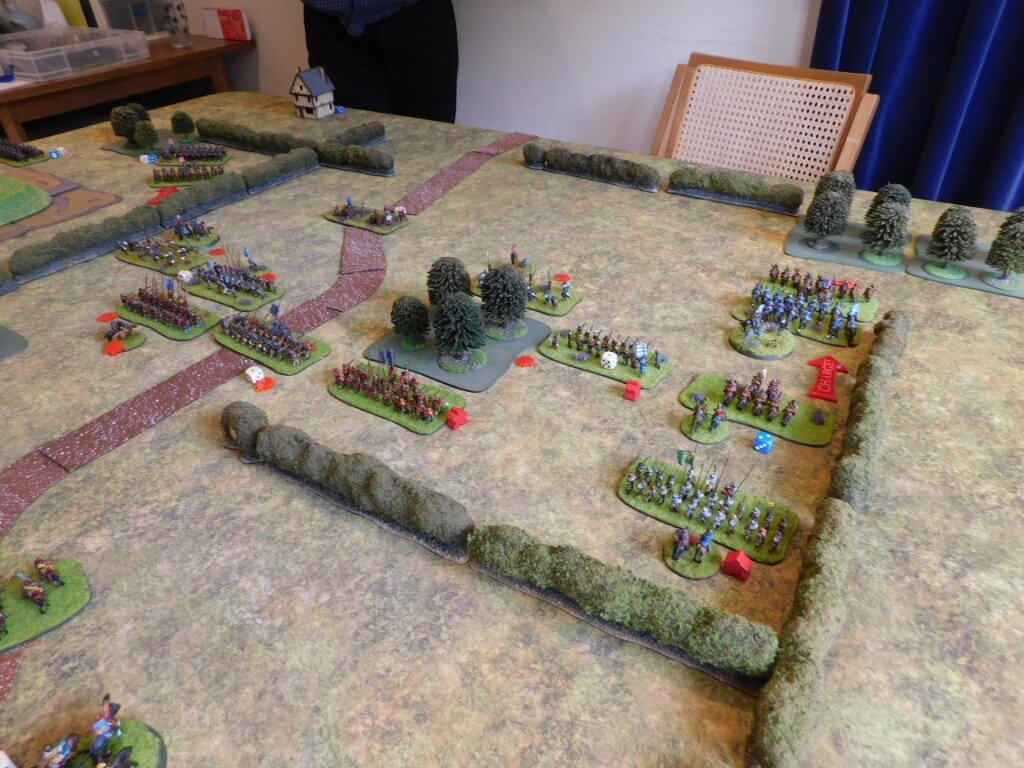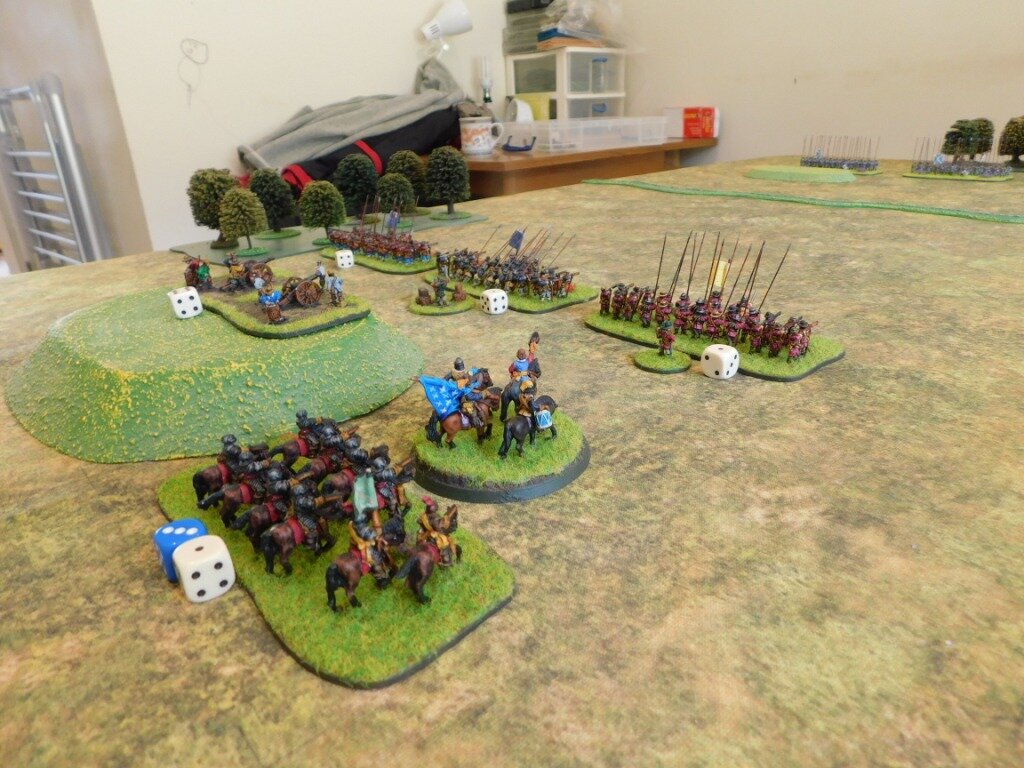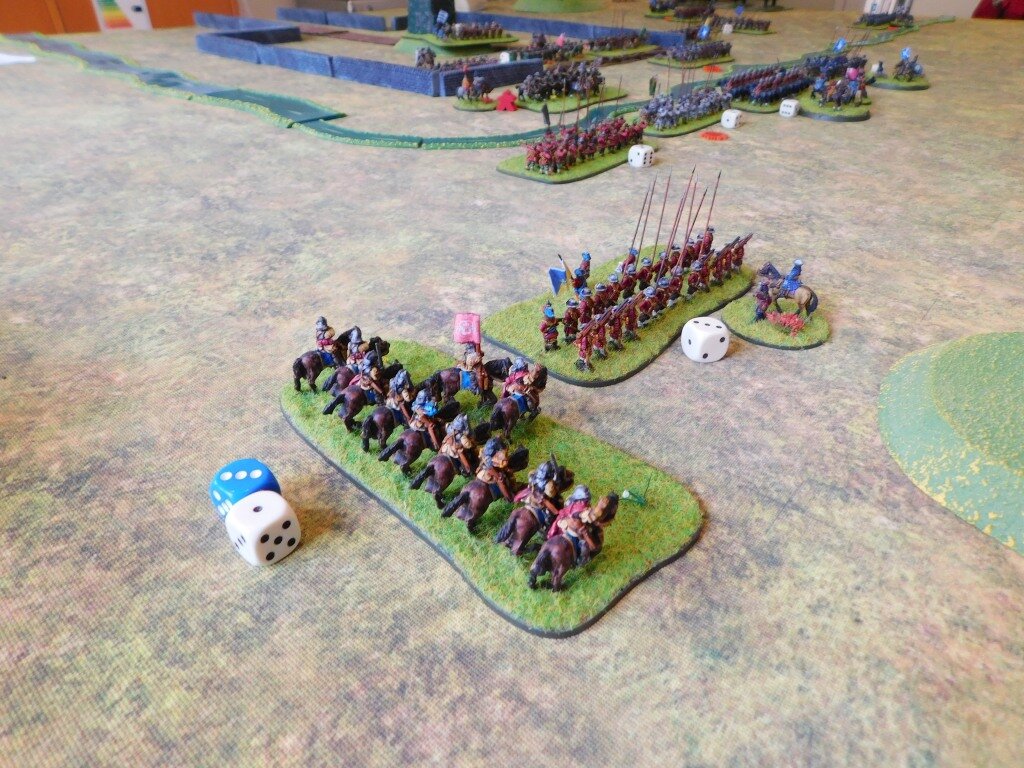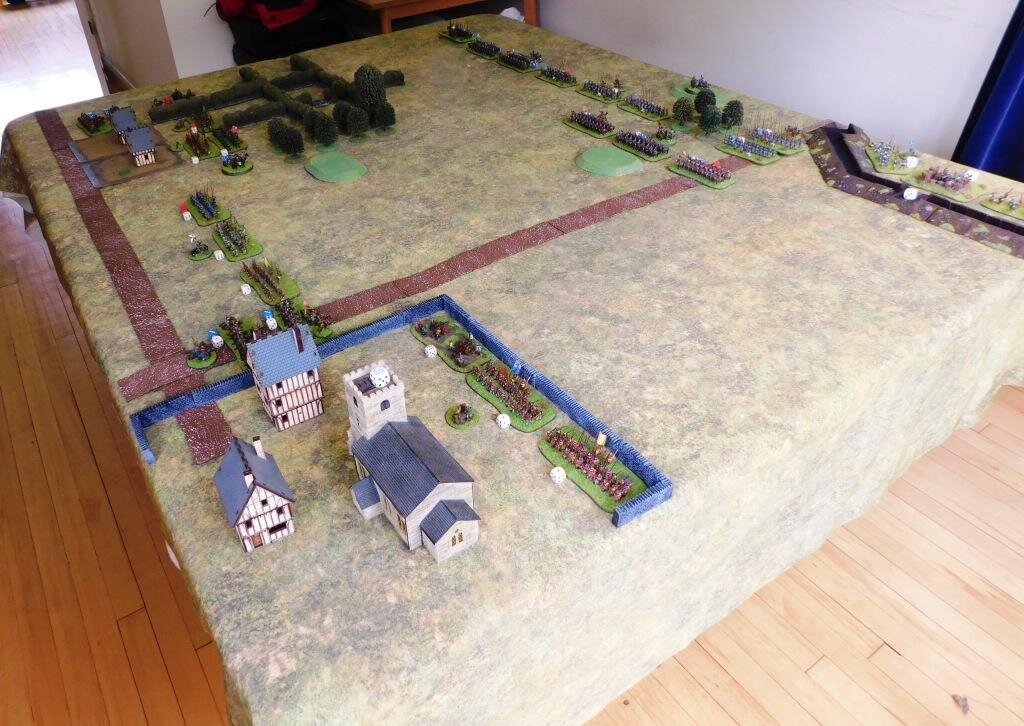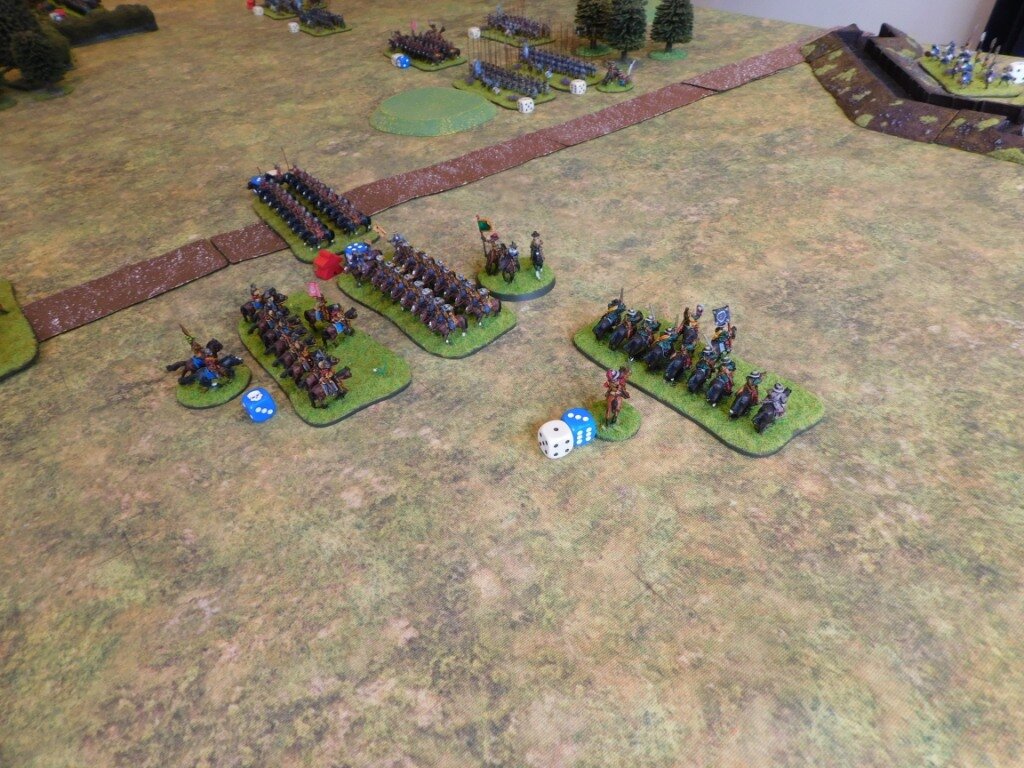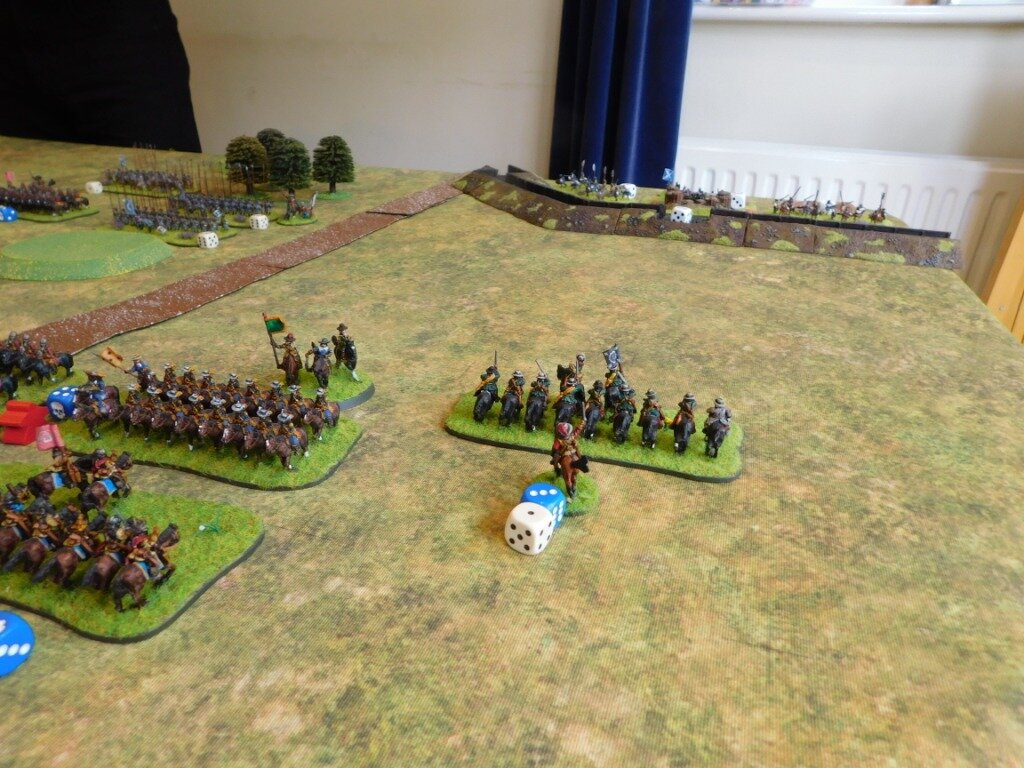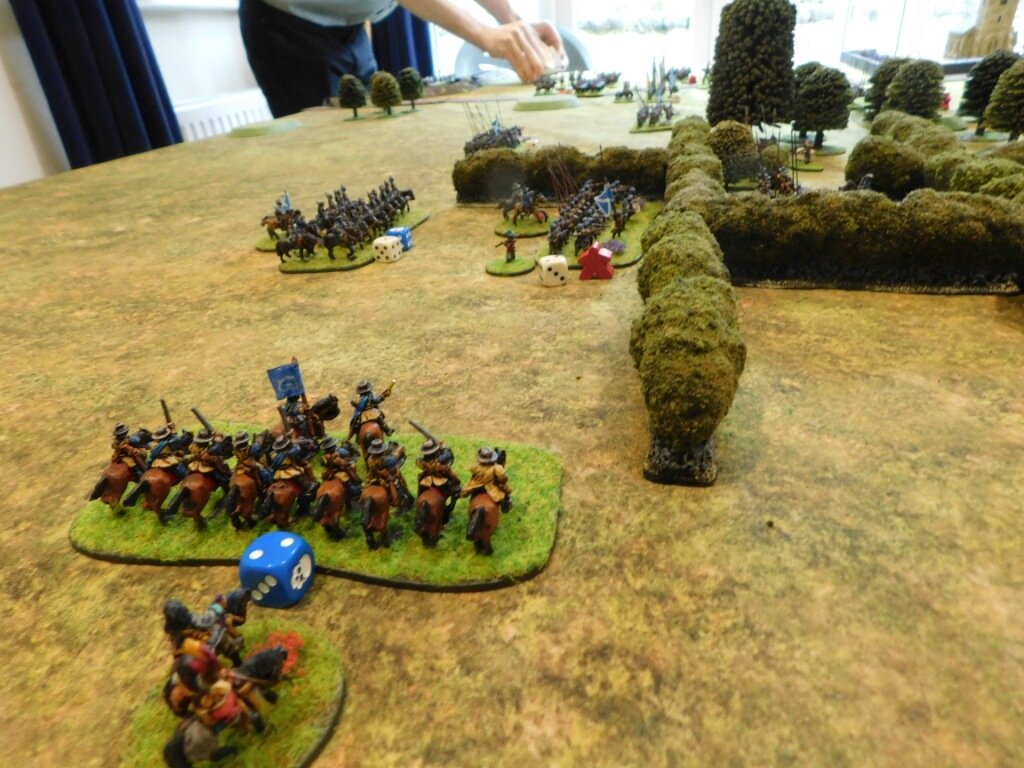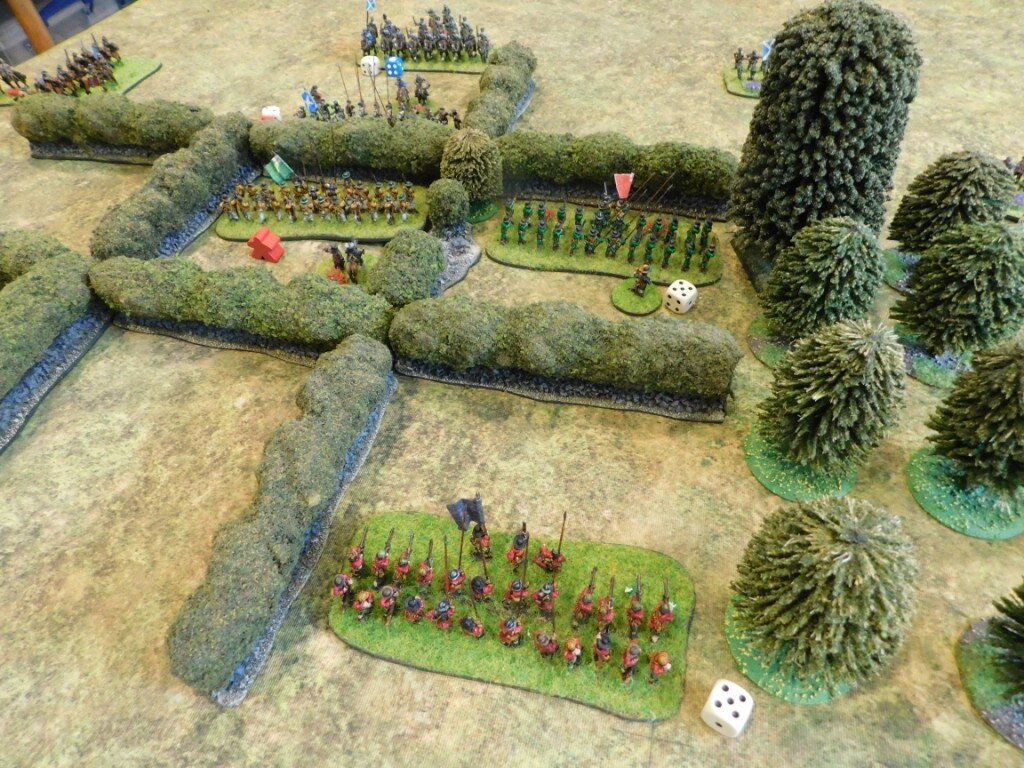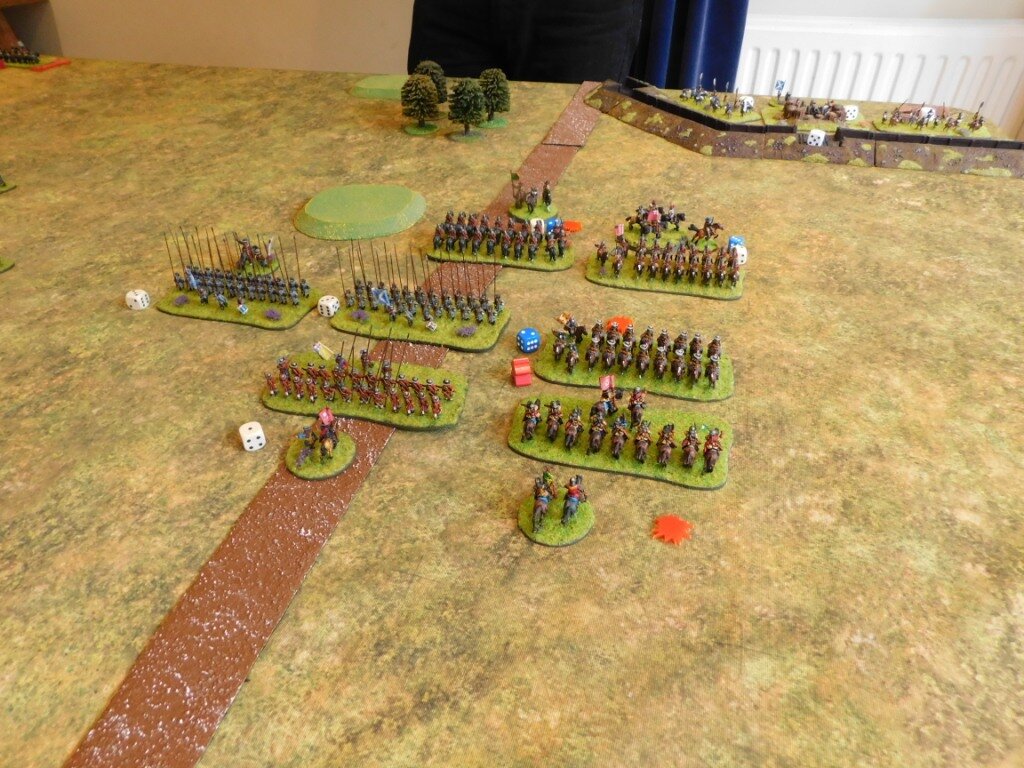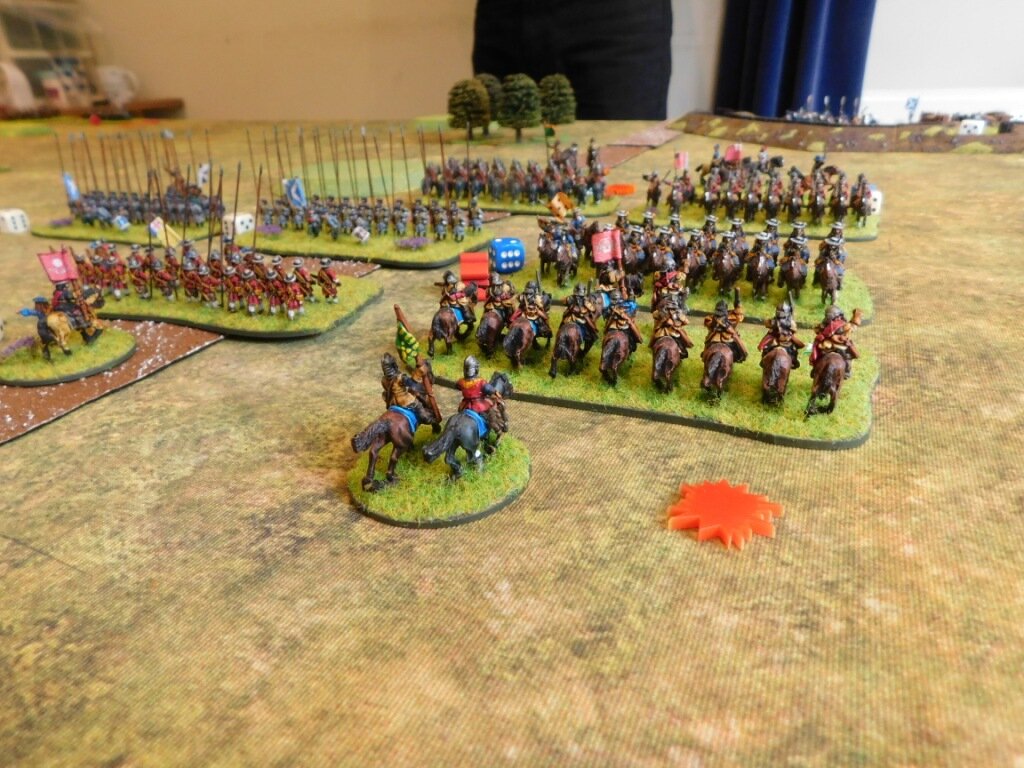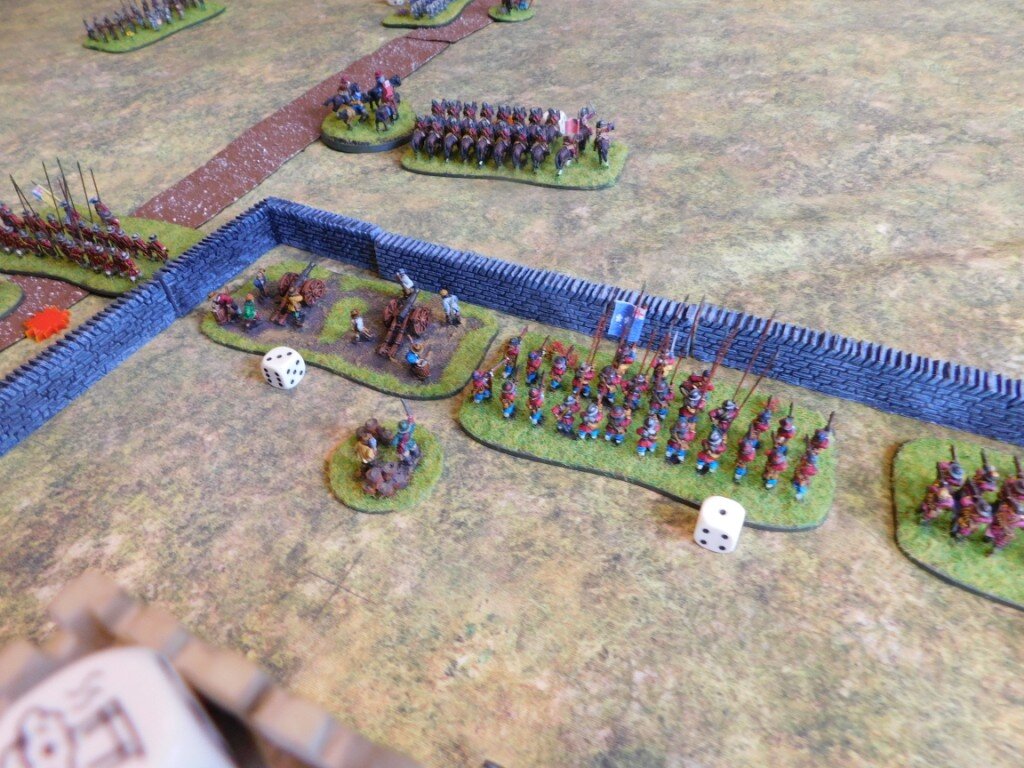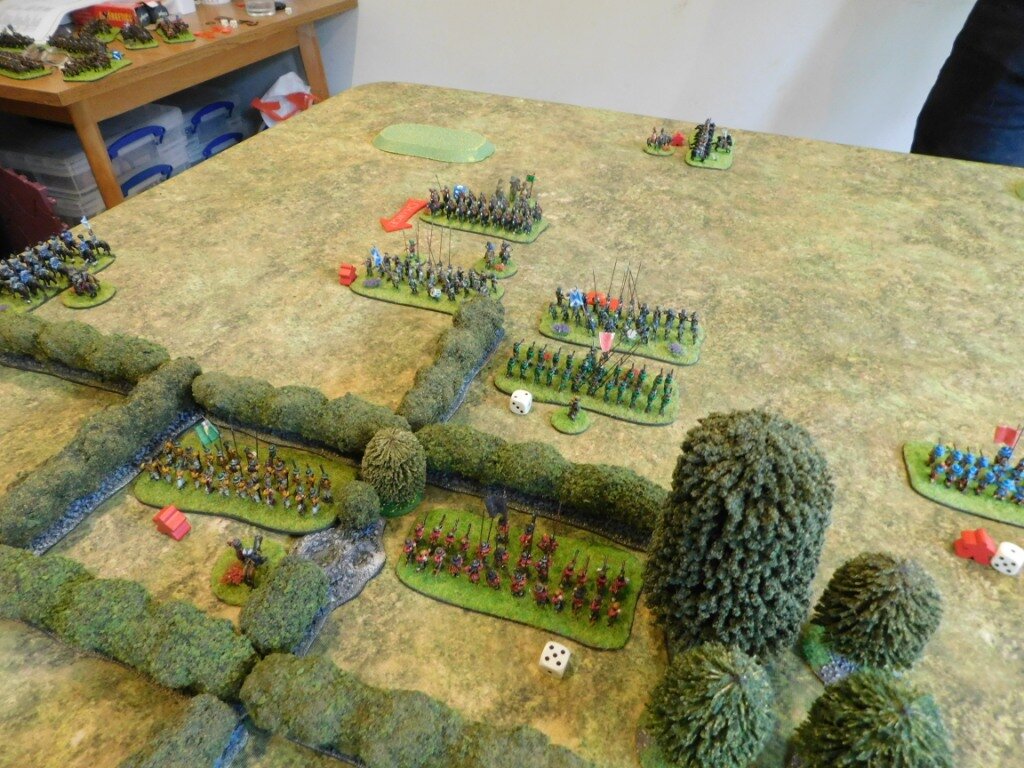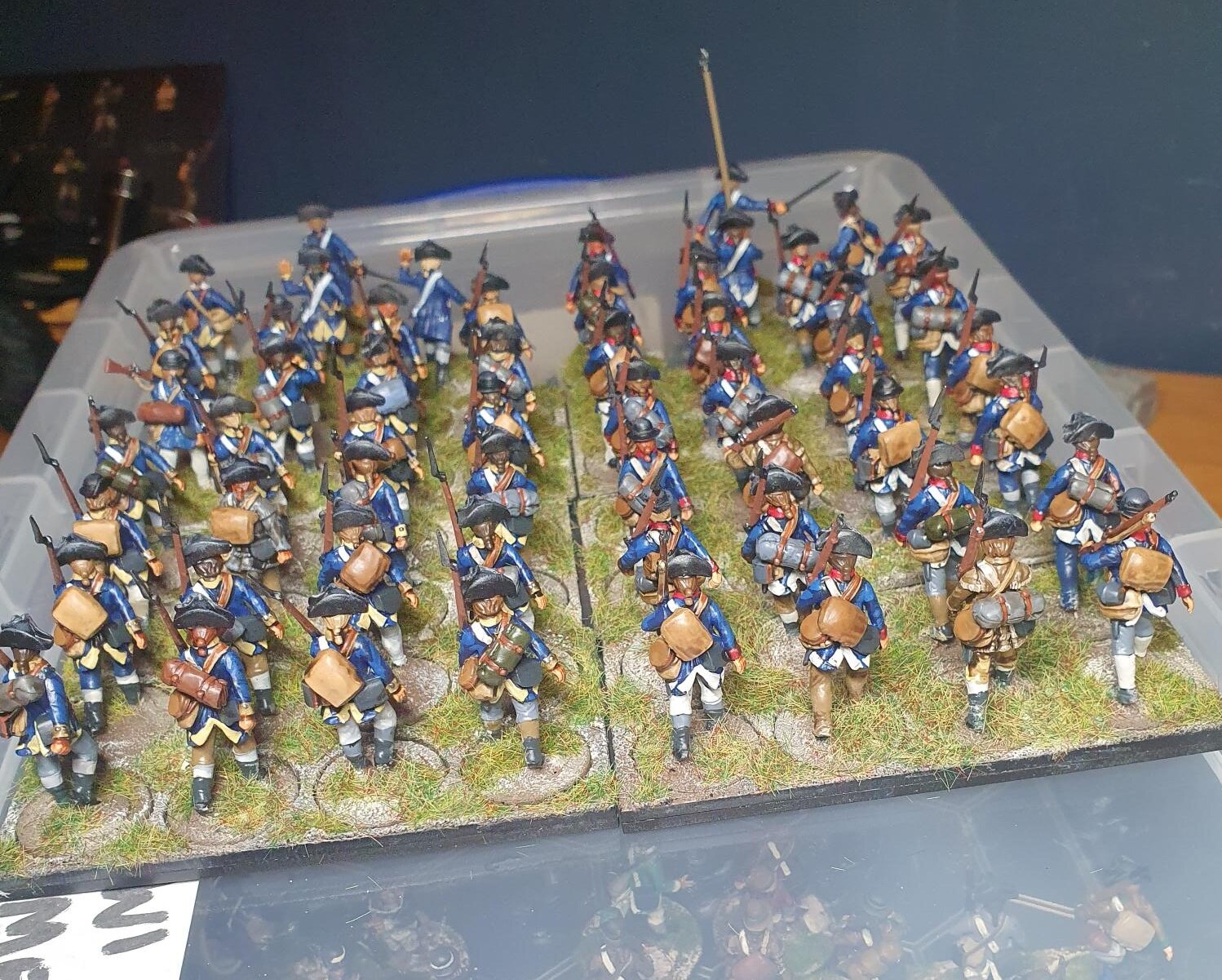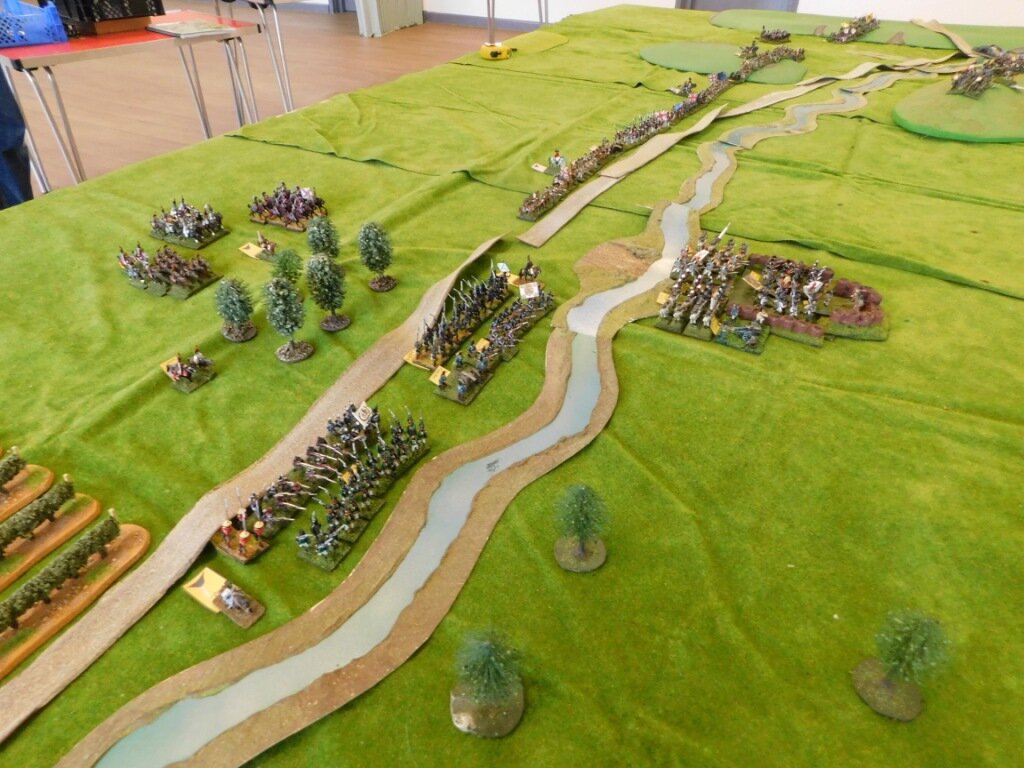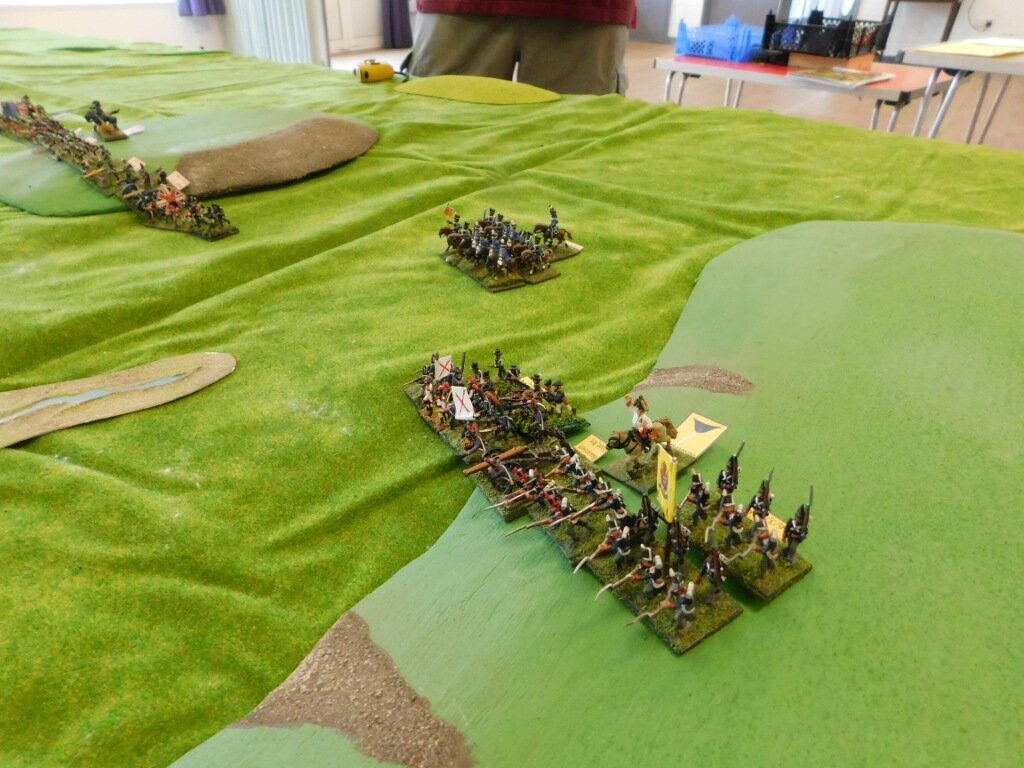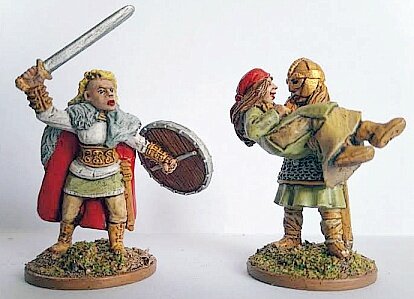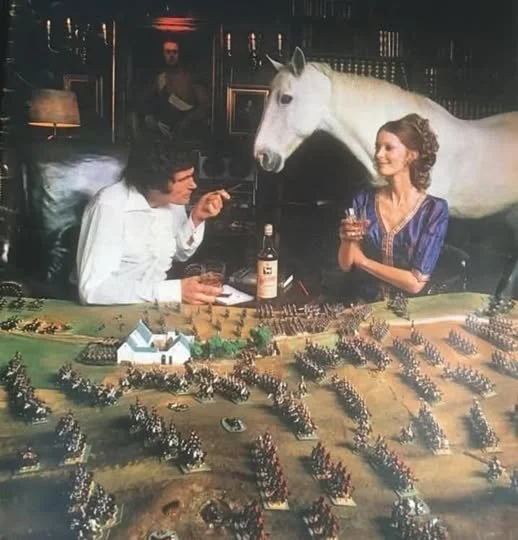FK&P AAR: Mundaydean Lane
/The next scenario in the The Siege of Norchester campaign involves the besieged Royalists trying to get a message through to summon help. Looking at the picture below, the Royalists are on the left, with the Roundheads on the right.
Just behind the Royalist line is a coach containing the messenger (see left hand picture, below) so this is a “Catch the Pigeon” scenario wherein the Royalists have to exit the coach off the other side of the table (or defeat the Parliamentarians so the road becomes clear) and the Roundheads have to make contact with the coach and achieve a single hit to stop it and capture their prey.
The battle began with an advance from both sides. I had a bit of luck here and managed to get my right flank cavalry force and a brigade of infantry nicely forward to the half way point (see picture, below, far left) whilst the Roundheads hung back a bit.
My second infantry brigade, however, seemed very reluctant to advance, leaving a bit of a hole in my centre: perhaps they were cautious about outstripping the coach by too far! See picture, below, centre.
On my left flank, the Parliamentarian horse facing me remained passive. I was quite happy with this, so did the same: my plan was to smash his horse from the field on the right then curl around the enemy left flank with what remained of my cavalry whilst my infantry advanced to contact. The Parliamentarians would be hit on two sides and I could then roll up their line like a piece of used carpet!
My left flank cavalry thus charged the Borders Horse in front of them as soon as possible (see picture, below, left) whilst my infantry moved forward. I kept my commanded shot back, intending to shoot from behind the hedge rather than face a charge by men with long pointy sticks (see picture, below, centre). Finally my other infantry brigade got the message and moved forward as well (see picture, below, right).
For some reason, the enemy horse on my left were still stationary. That suited me fine, as there were a lot of them and although the fact that my horse fought in the more modern Swedish style, I couldn’t risk one of his squadrons breaking through and going after the coach carrying the “pigeon”.
On the right, the two infantry lines were now fully engaged (below, left and right pictures) and I was gaining an advantage. On the right, a volley into the Highlanders in the wood was enough to drive them backwards, and a two-on-one situation near the hedge was enough to destroy one of his battalia. I had also achieved a two-on-one situation in the centre, and was just waiting for the opportunity to drive the enemy back there as well.
Meanwhile my horse had indeed destroyed or driven back their opposition and, despite both full-size squadrons threatening to leave the field in pursuit, one had been stopped by a wood for long enough to regain their senses, and had rallied and returned to hit a unit of Borders pistoliers in the flank. The small squadron that had been my reserve charged over the hedge into the flank of an enemy battalia and it looked as if I had decisively won that flank and could start the roll up process.
Meanwhile on the left, sensing that something needed to be done urgently if the battle was not to be lost, the enemy horse had finally begun to move forward.
I covered the advance of the squadron on the far left and, in an extraordinarily successful charge, another squadron of my cavalry had smashed the Dutch horse in front of them from the field. I was being very lucky with my cards!
With his right flank largely destroyed, his centre beginning to bow under the pressure, and his left flank reserve surprisingly now at a disadvantage, it was only a matter of time before the Roundheads retreated. The pictures below show the end stages of the battle:
My plan, for a change and helped by some lucky cards, had worked perfectly: the Roundheads collapsed and the coach and its passenger were able to sedately trot down the road and exit the table unmolested by any Parliamentarians!










